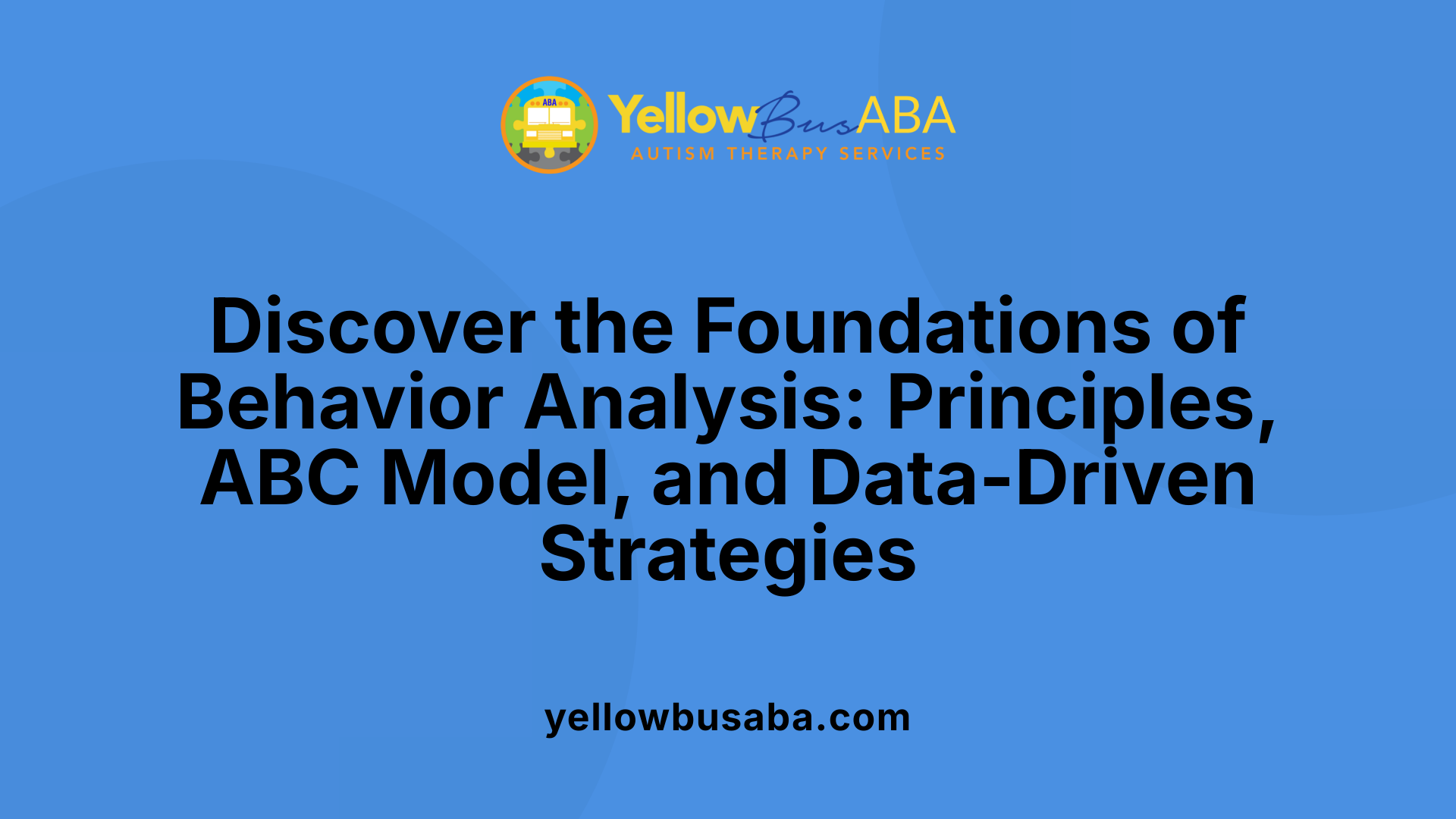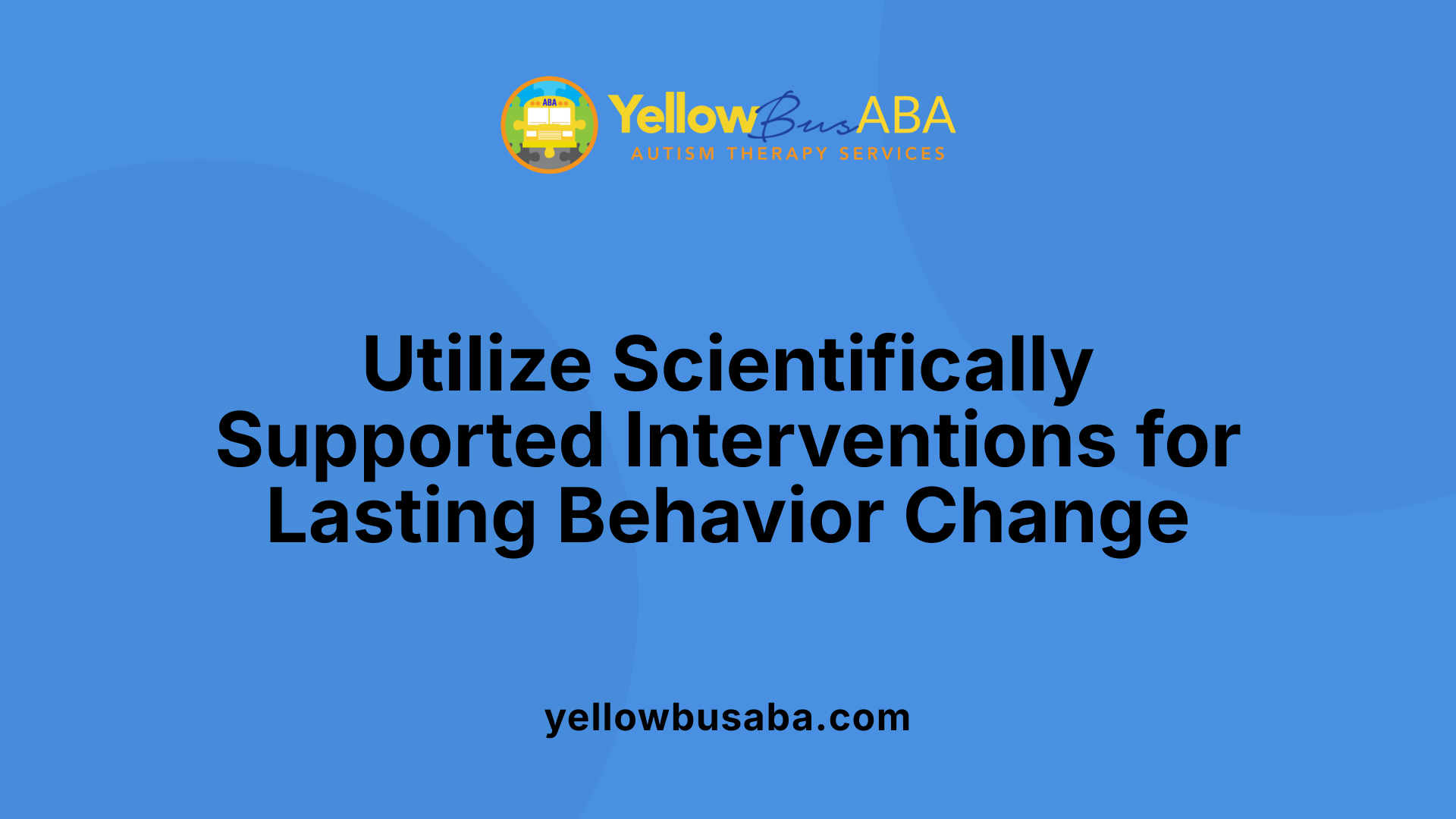Foundations of Behavior Analysis
Behavior analysis is a scientific discipline focused on understanding and influencing human actions through systematic, evidence-based techniques. Rooted in the principles of behaviorism, it examines how environmental factors shape behavior and explores methods to foster positive change. This article delves into the core concepts, application, and ethical practices of behavior analysis, with particular emphasis on its role in supporting individuals with autism.
Core Principles and Concepts of Behavior Analysis

What are the fundamental principles and core concepts of behavior analysis?
Behavior analysis is grounded in understanding how environment influences actions. It revolves around systematic techniques aimed at increasing helpful behaviors and decreasing harmful ones.
A central idea is reinforcement, which involves providing a positive stimulus following a behavior, encouraging its repetition. Conversely, punishment aims to reduce undesired behaviors by introducing or removing stimuli that diminish the likelihood of that behavior occurring again.
Another essential concept is extinction, where reinforcement is withheld after a behavior, leading to its gradual decline. These principles work within a framework called the three-term contingency, or ABC model:
| Component | Description | Example |
|---|---|---|
| Antecedent | What happens before the behavior | Teacher asks a question |
| Behavior | The observable action | Student answers |
| Consequence | What occurs after the behavior | Student receives praise |
The functions of behavior explain why behaviors happen. Common functions include escaping from demands, gaining attention, accessing tangibles or preferred items, and seeking instant gratification.
Behavioral interventions are highly data-driven. Practitioners, often Board Certified Behavior Analysts (BCBAs), use assessments like functional behavior assessments (FBA) to identify behavior functions and tailor strategies accordingly.
Tools such as task analysis, prompting, shaping, and modeling help teach new skills or replace problematic behaviors. Continuous data collection and analysis ensure progress is measurable and interventions are effective.
These principles form a reliable scientific foundation that enables consistent, impactful behavior change across different environments and individual needs.
Application of ABA in Therapy for Autism
Behavior analysis plays a crucial role in ABA therapy for children with autism. It involves understanding how behaviors are influenced by environmental factors and learning mechanisms. Through systematic assessment, behavior analysts develop individualized treatment plans targeting specific behaviors and skills.
Interventions often include techniques like Discrete Trial Training (DTT) and Pivotal Response Treatment (PRT). DTT is a structured method that uses clear cues, responses, reinforcement, and pauses to teach new skills by breaking them down into small steps. PRT, on the other hand, emphasizes naturalistic teaching, motivating children through their interests to foster pivotal skills like motivation and self-regulation.
Reinforcement is at the heart of ABA strategies. Desirable behaviors are rewarded immediately with primary, secondary, or natural reinforcers to strengthen those behaviors. For example, praising a child for communicating or providing access to a preferred activity increases the likelihood of future attempts.
In addition to direct teaching, ABA focuses on promoting the generalization and maintenance of skills. This means helping children transfer learned behaviors across different settings, people, and over time, ensuring skills are functional and durable.
Overall, ABA applies a range of evidence-based techniques to improve communication, social interactions, independence, and reduce undesirable behaviors. Its scientific foundation ensures interventions are tailored, measurable, and effective, supporting meaningful progress for children with autism.
Models and Techniques in ABA Practice
What are the key techniques and models used in ABA, such as the ABC model?
Applied Behavior Analysis (ABA) employs a variety of models and techniques to foster behavior change and skill development. One fundamental approach is the ABC model, which stands for Antecedent, Behavior, and Consequence. This analysis helps identify triggers and outcomes associated with behaviors, allowing practitioners to understand the function of behaviors and modify environments accordingly.
Discreet Trial Training (DTT) is another widely used method. It involves structured teaching sessions where prompts are given, responses are reinforced, and pauses are incorporated to reinforce learning. DTT allows for clear, measurable progress in specific skills by breaking them into small, manageable steps.
Modeling is also integral—both video-based and live demonstrations help children learn by observing desired responses. Prompting techniques, such as verbal cues or physical assistance, support initial learning. As skills develop, prompt fading gradually reduces assistance, encouraging independence.
Behavior chaining is employed to teach complex activities by linking smaller, sequential steps. This technique can follow forward chaining—where teaching begins with the first step—or backward chaining—starting from the final step—based on the child's needs.
Extinction is used to decrease undesirable behaviors by withholding reinforcement, especially when paired with teaching alternative, appropriate behaviors. Differential reinforcement involves reinforcing desirable behaviors while consistently withholding reinforcement for undesired ones, balancing the reduction of harmful behaviors and promoting positive skills.
Other methods, such as Functional Communication Training (FCT), natural environment teaching, and the use of behavioral prompts, support the development of functional communication and adaptive skills.
Together, these models and techniques form a comprehensive toolkit in ABA practice. They are rooted in behavioral principles and supported by scientific research to produce meaningful, lasting improvements in children’s social, communication, and daily living skills.
The Seven Dimensions of ABA and Ethical Practice

What are the seven dimensions of ABA that underpin effective practice?
Applied Behavior Analysis (ABA) is guided by seven fundamental dimensions that ensure its practice is ethical, effective, and scientifically grounded. These include Behavioral, Applied, Analytic, Technological, Conceptually Systematic, Generality, and Effectiveness.
The Behavioral dimension emphasizes that ABA focuses exclusively on observable and measurable behaviors. It intentionally excludes private events such as thoughts or feelings, as these cannot be directly measured. This approach ensures that interventions are based on concrete, verifiable data.
The Applied dimension underlines the importance of targeting socially significant behaviors. These are behaviors that directly enhance the individual’s daily life, communication, social skills, or reduce harmful behaviors. The goal is to make meaningful improvements that matter to the person.
The Technological dimension requires that intervention procedures are described clearly and in enough detail so they can be consistently replicated by others. This transparency fosters reliability and facilitates training across practitioners.
Meanwhile, the remaining dimensions work together to ensure the quality and integrity of ABA practices:
- Analytic: Demonstrates a clear cause-and-effect relationship between the intervention and behavior change.
- Conceptually Systematic: Interventions are based on and linked to behavioral principles, ensuring consistency with the science.
- Generality: Skills learned through ABA practices transfer across various settings, times, and behaviors, ensuring long-term benefits.
- Effectiveness: Interventions produce significant, socially valid improvements that justify their implementation.
Together, these dimensions promote the application of ABA that is ethical, evidence-based, and capable of producing lasting, meaningful changes in individuals’ lives.
Scientific Basis and Methodology of Behavior Analysis
What is the scientific basis and methodology of behavior analysis?
Behavior analysis is a scientific discipline that investigates how behavior is influenced by the environment, using empirical research and systematic experimentation. Its methodology is rooted in observing and measuring actions that are observable and quantifiable, allowing practitioners to make data-driven decisions.
At the core of behavior analysis are classical conditioning, which explains how associations are formed between stimuli, and operant conditioning, developed by B.F. Skinner, which describes how behaviors are strengthened or weakened by their consequences. These principles help explain why behaviors occur and how they can be changed.
A fundamental concept is the three-term contingency, comprising antecedents (what happens before a behavior), the behavior itself, and consequences (what follows the behavior). This model clarifies how certain environmental factors trigger behaviors and how responses are reinforced or reduced.
Research methods in behavior analysis involve extensive data collection, typically through direct observation, frequency counts, duration measurements, and recording the context associated with behaviors. These quantitative data are used to identify patterns, evaluate intervention effectiveness, and refine strategies.
In practice, behavior analysis distinguishes between experimental analysis of behavior (EAB) and applied behavior analysis (ABA). EAB involves laboratory studies on animals and humans to understand fundamental learning processes. ABA translates these findings into interventions aimed at solving socially relevant challenges, such as improving communication skills or reducing problematic behaviors.
Interventions are designed based on research, using techniques like reinforcement, prompting, shaping, and chaining, all tailored to the individual’s needs. The goal is to produce meaningful, lasting change while adhering to strict scientific standards.
Ultimately, behavior analysis integrates rigorous scientific methodology with clinical expertise and client preferences, making it a robust approach to understanding and enhancing human behavior in various settings—including education, healthcare, and community environments. This scientific foundation ensures that practices are effective, ethical, and capable of broad application across different populations and circumstances.
Evidence-Based Practices in Behavior Analysis
 Within behavior analysis, the term 'evidence-based practices' (EBPs) refers to intervention strategies that are supported by a strong foundation of scientific research. These practices have demonstrated their effectiveness through rigorous studies, such as single-subject experiments and large-scale controlled trials like randomized controlled trials (RCTs). This scientific backing ensures that the methods used are reliable and effective for improving behaviors.
Within behavior analysis, the term 'evidence-based practices' (EBPs) refers to intervention strategies that are supported by a strong foundation of scientific research. These practices have demonstrated their effectiveness through rigorous studies, such as single-subject experiments and large-scale controlled trials like randomized controlled trials (RCTs). This scientific backing ensures that the methods used are reliable and effective for improving behaviors.
EBPs are often standardized into detailed manuals or protocols, which makes their implementation consistent and allows for independent replication across different settings. This standardization is critical for maintaining fidelity and ensuring that interventions are applied as validated by research.
Common empirically supported techniques in ABA include:
- Discrete Trial Training
- Natural Environment Training
- Pivotal Response Treatment
- Video Modeling
- Functional Communication Training
- Social Stories
Organizations such as the National Professional Development Center (NPDC) and the National Standards Project promote and endorse these practices. Their guidelines help ensure that ABA interventions remain scientifically grounded.
Legal and policy frameworks frequently mandate the use of EBPs to guarantee children and adults with autism or other developmental challenges receive effective, ethical, and tailored interventions. Practitioners are encouraged to integrate client preferences and clinical judgment while collecting ongoing data to adjust and optimize treatment plans.
By adhering to evidence-based practices, behavior analysts can deliver interventions that are not only scientifically validated but also highly individualized, fostering meaningful and lasting improvements in behavior and quality of life.
Facilitating Behavior Change and Improving Outcomes

How does behavior analysis facilitate behavior change and improve treatment outcomes?
Behavior analysis promotes meaningful behavior change through carefully structured, scientifically supported interventions. At its core, it involves understanding how behaviors are influenced by environmental cues and consequences. This understanding allows practitioners to develop individualized strategies that reliably modify behaviors.
Effective ABA interventions include techniques such as positive reinforcement, which rewards desirable actions to encourage their recurrence, and antecedent modifications that prepare the environment for successful skill performance. Other methods like shaping, fading, and chaining break down complex skills into manageable steps, gradually guiding learners toward independence.
Data collection plays a crucial role in this process. Continuous monitoring of behaviors enables practitioners to assess progress objectively, make informed adjustments, and ensure interventions are both effective and sustainable. The empirical approach of ABA guarantees that changes are measurable across different settings—be it at home, school, or in the community—fostering generalization of skills.
Overall, behavior analysis optimizes treatment results by focusing on skill acquisition and reducing problematic behaviors. These targeted efforts lead to improvements not only in specific areas such as communication, social skills, and academics but also contribute to enhanced overall quality of life for individuals on the autism spectrum or with other behavioral challenges.
Moving Forward with Behavior Analysis
Understanding the fundamental principles and core concepts of behavior analysis provides the foundation for ethical, effective, and socially significant intervention. By applying the seven dimensions, utilizing scientifically supported techniques, and committing to ongoing data collection and analysis, practitioners can foster meaningful behavioral improvements. As ABA continues to evolve with technological advancements and research, it remains a vital approach for enhancing individuals’ lives, especially those with autism, across diverse settings. Embracing a scientific, individualized, and ethical framework ensures that behavior analysis will continue to contribute significantly to behavioral health and human development.
References
- The 7 Dimensions & Core Principles of ABA
- [PDF] Principles of Applied Behavior Analysis - PaTTAN
- The Science of ABA: Understanding the Principles of Behavior ...
- What are the Fundamental Concepts of ABA | TeachTown Inc.
- Understanding the ABA Principles and How They Help Treat Autism
- What Are the Three Basic Principles of ABA?
- Applied Behavior Analysis (ABA) | Autism Speaks
- Principles of ABA - Understanding Behavior and Therapy
- Behavior Analysis in Psychology: How It's Used - Verywell Mind
- ABA Principles - Aspire Child & Family Services






